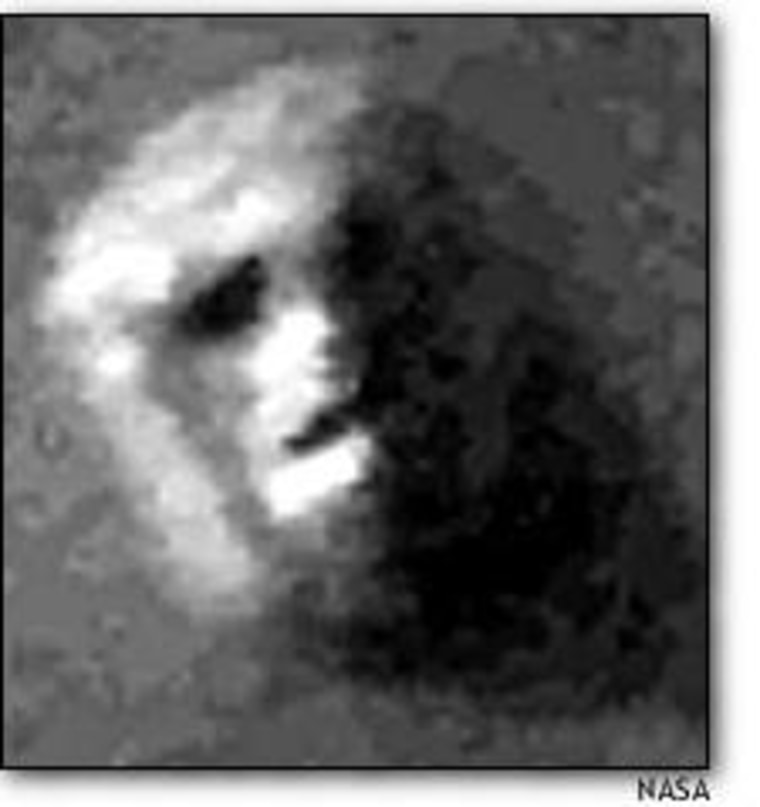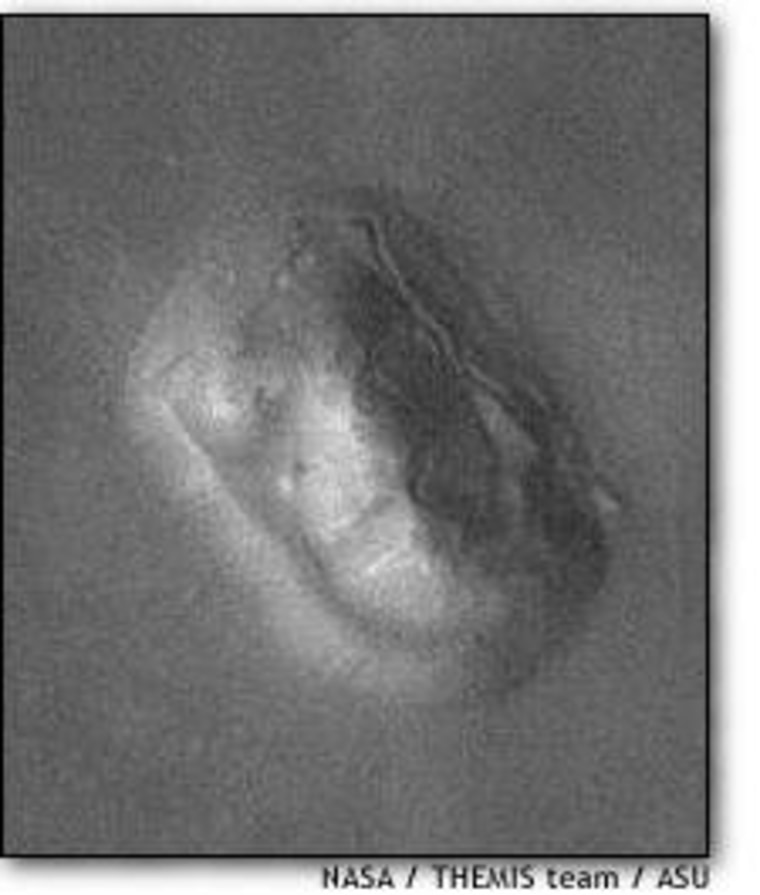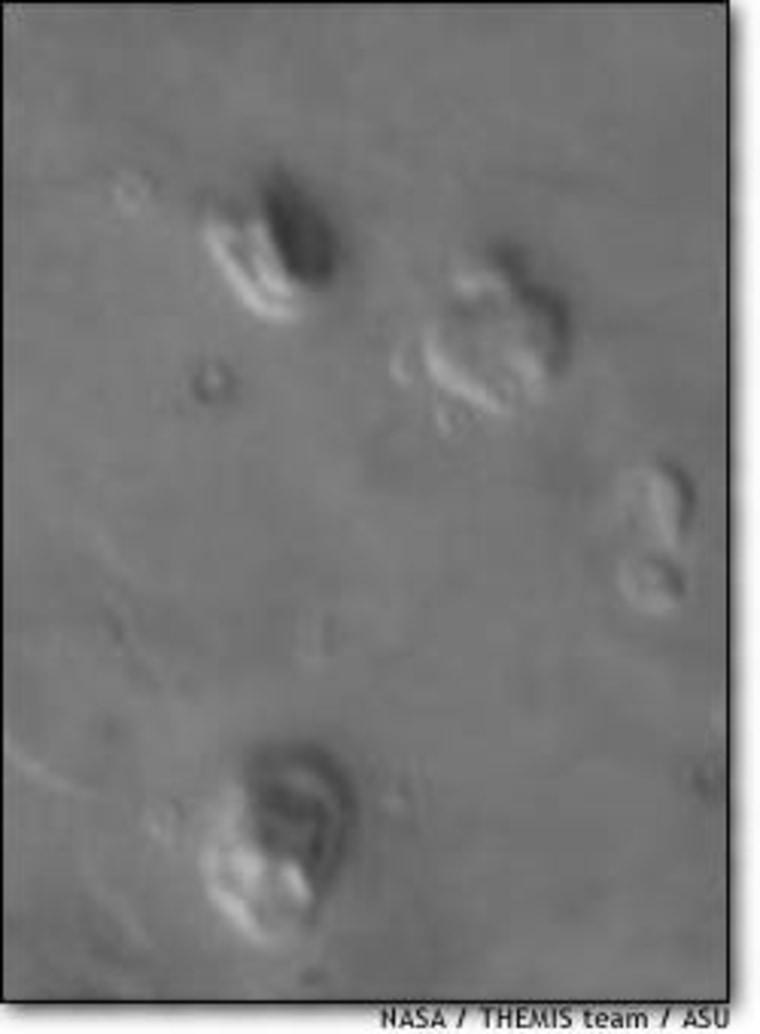NASA’s Mars Odyssey orbiter has sent back the first infrared image of a long-debated formation known as the “Face on Mars.” Observers who expected the infrared picture to provide new revelations about the features voiced their disappointment, saying they were hoping for “night-vision” imagery as well as daytime views.
The debate over the Face was sparked a quarter-century ago when NASA’s Viking orbiters sent back pictures of the Cydonia region that appeared to show a half-shadowed, helmeted face. Since then, additional formations have been identified as the “D&M Pyramid,” “the City” and so forth — and fans of the Face have argued that the formations showed evidence of artificial construction.
In the past five years, sharper imagery from NASA’s Mars Global Surveyor orbiter strengthened the mainstream view that the Face and the other formations were nothing more than wind-eroded, crumbling mesas. But the Face on Mars lived on as a fringe-science phenomenon — and even provided a key piece of the plot for the 2000 science-fiction movie “Mission to Mars.”
The infrared edge
The Viking and Global Surveyor images of Cydonia were made in visible light. In contrast, Mars Odyssey is designed to take pictures by day or by night, using its Thermal Emission Imaging System, or THEMIS for short. In addition to taking visible-light pictures, THEMIS can register various wavelengths of infrared light — in effect, providing a picture based on temperature readings from the Red Planet’s surface.

By comparing the day and night readings, scientists can figure out how the Martian rocks and soil warm up and cool off in the planet’s daily cycle — yielding clues about the surface composition. “Hot spots,” for example, could hint at subsurface volcanic activity or even hot springs.
The THEMIS image released Wednesday was made by combining filtered images for 10 different wavelengths. Its maximum resolution for infrared imagery is about 328 feet (100 meters) per picture element, which is not as good as the Global Surveyor images or the highest-resolution Viking images. It’s not even as sharp as an earlier visible-light image from THEMIS.
The imager’s research team at Arizona State University said the new picture didn’t show anything remarkable about the Face or other features.
“Our instruments are showing that there are no differences from the other mesas in that area,” Jim Rice, a member of the team, told MSNBC.com. “It’s just natural erosional processes. There’s nothing unique about the Face.”
He said that “if there were any major differences in rock types, they’d be showing up in the infrared.”
Despite that assessment, some of the Face’s most ardent advocates claimed that there was more than what met the eye. In a flurry of e-mail messages sent to public officials and media outlets, including MSNBC.com, they said they had been led to expect nighttime infrared imagery that might show some unexpected features.

“By NASA’s own admission, they have nighttime thermal images of the Cydonia region, which should provide valuable scientific information regarding the true geology of the region,” Timothy Sharpe of Jackson, Miss., wrote.
“That’s totally incorrect,” Rice said. “We have not had a pass over (the Face during) nighttime yet.”
He said researchers would “definitely” be interested in getting nighttime infrared imagery of the Face when the orbiter’s ground track presented an opportunity.
Rice said THEMIS was also gathering infrared pictures of a wide variety of other targets — such as gullies and channels, layered terrain and polar caps, the Viking landing sites as well as potential landing sites for next year’s Mars Exploration Rovers. The imagery is posted regularly on Arizona State’s THEMIS Web site.
“We’re putting new stuff out there every day for the public to look at,” Rice said. “There’s no secret here, no conspiracy.”
